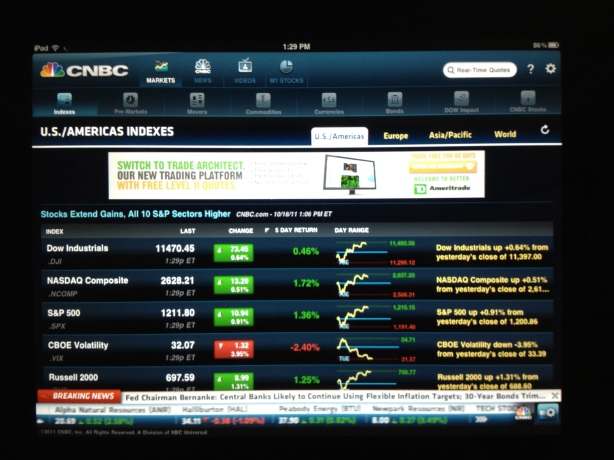It was a great New Year’s gift.
I was at our home in California this week and looking forward to watching my alma mater, Syracuse, play DePaul in basketball on New Years Day. The Orange are undefeated and the number one team in the country this year, and despite my brutal travel schedule and the fact that we are splitting our time between San Francisco and New York City, I’ve had the opportunity over one form of media or another, to watch most of their first 14 games live on TV, a computer, my IPad or my IPhone.
 This time I was really looking forward to seeing the game on our big screen TV at home. Even though the game was scheduled on ESPN3, the digital channel available on the internet, I had purchased the pay-per-view package on Comcast’s Xfinity Service that was also carrying the game on cable.
This time I was really looking forward to seeing the game on our big screen TV at home. Even though the game was scheduled on ESPN3, the digital channel available on the internet, I had purchased the pay-per-view package on Comcast’s Xfinity Service that was also carrying the game on cable.
But when I sat down to watch the game at 2pm on New Years day, all I could get was a notice on the screen saying the game would be available soon, and a useless code number.
I called Comcast, which is normally pretty responsive to my calls.
First, whatever choices I made on their infuriating automated call system only got me to a tape that their offices were closed for the holidays. Then, after altering my selections to “technical” difficulties I was able, after 15 minutes (the game was 10 minutes in at this point) to find an agent who was very nice and tried to help me. After several restarts of my system and long pauses while she spoke to co-workers, presumably about my problems, the game finally reached half time (nearly an hour on the phone) before she gave up trying to get this pay service started on cable box. After talking to various people she also came back to tell me there was no such game on the schedule (it was on the on-screen guide in great detail) and then that maybe it was on the schedule but she couldn’t explain why they couldn’t start it..they were able to take my money for the special package, but couldn’t seem to deliver me the content. She seemed as frustrated as I was and was trying to be helpful. Ultimately, all she could do was schedule a service call for later this week.
This would have been a totally infurating process had I not decided (about 15 minutes into the game) to check to see if I was able to get the game on my Ipad via ESPNWatch, a service I get because I’m an ESPN subscriber on Time Warner Cable in NYC and Comcast in San Francisco.
Sure enough, I found the game on my IPad and watched the last 2/3rds of it while waiting for it to appear on my TV. Ironically, if I had the right wire attachments, I could have ported the game from my IPad onto the TV and watched it, with no commercials!, on the big screen.
So despite my frustration with Comcast’s inability to delivery their own service, I still had access to the event. While I still wanted to see it on my big screen, I had found an alternative that wasn’t available to me until this year.
What will it mean for next year, when I’m deciding whether or not to add the extra sports package to my Xfinity service from Comcast?
Take a guess.














